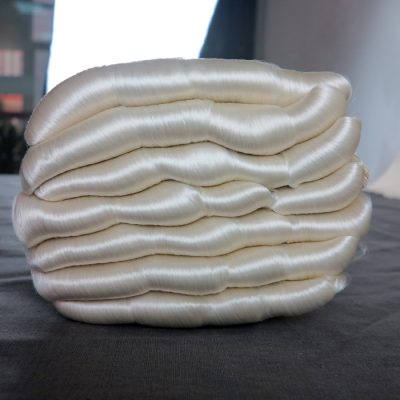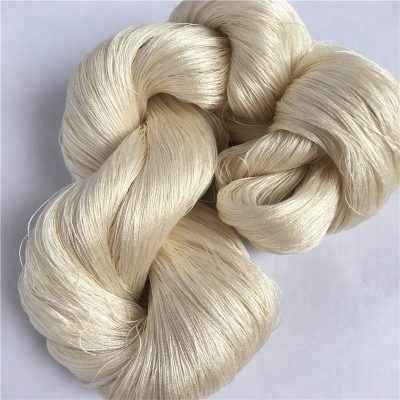In the traditional concept, a product with a certain fineness and mechanical properties composed of short fibers arranged in the axial direction and twisted, or composed of filaments (twisted without twisting), is collectively referred to as “yarn”. Products made up of two or more single yarns combined and twisted are collectively referred to as “threads”. With more compound strands and thicker threads, they are used to be called “ropes.” In fact, the yarn is a soft and slender fiber assembly formed by gathering fibers along the length direction.
1. Classification according to yarn system
The yarn system refers to the basic structural elements and structural forms of the yarn, which can be divided into “yarn”, “silk” and “thread”.
1. Yarn
Yarn, also known as single yarn, is processed by spinning short fibers so that the short fibers are arranged in the axial direction and twisted. It can be single-axis or multi-axis, and can introduce silk or yarn from other axis systems, and can be composed of different types of systems and form yarns of different thicknesses. As a result, secondary classifications of yarns can be formed.
(1)According to the fiber feeding shaft system points
In the past, yarn forming was made of uniaxial fiber strand feeding, and the diversity or multiaxiality of yarn forming was the most basic way to change yarn structure. According to the number of fiber strands fed, there are common double strands, such as self-twist spinning, A/B yarn, siro spinning, etc.; there are multiple strands of split spinning, multi-roller feeding system spinning Yarn, etc., but mostly realized on ring spinning.
(2) According to the type of short fiber
yarn can be divided into cotton or cotton type, wool or wool type, spun silk, hemp or hemp type, medium-length and chemical fiber yarn, respectively called cotton yarn, wool yarn, spun yarn, hemp yarn, chemical fiber yarn.
(3)According to the spinning method
This classification method is mainly based on the yarn mechanism and principle of action. For example, the traditional ring spinning, referred to as ring spinning, or even directly called “yarn”. The corresponding non-ring spinning is divided into free-end spinning according to the fiber holding function, such as rotor (air-jet) spinning, vortex spinning, electrostatic spinning, friction (dust cage) spinning and other yarns; non-free-end spinning , Such as self-twist spinning, air-jet spinning, parallel spinning, wrapping spinning, bonded spinning and other yarns.
























